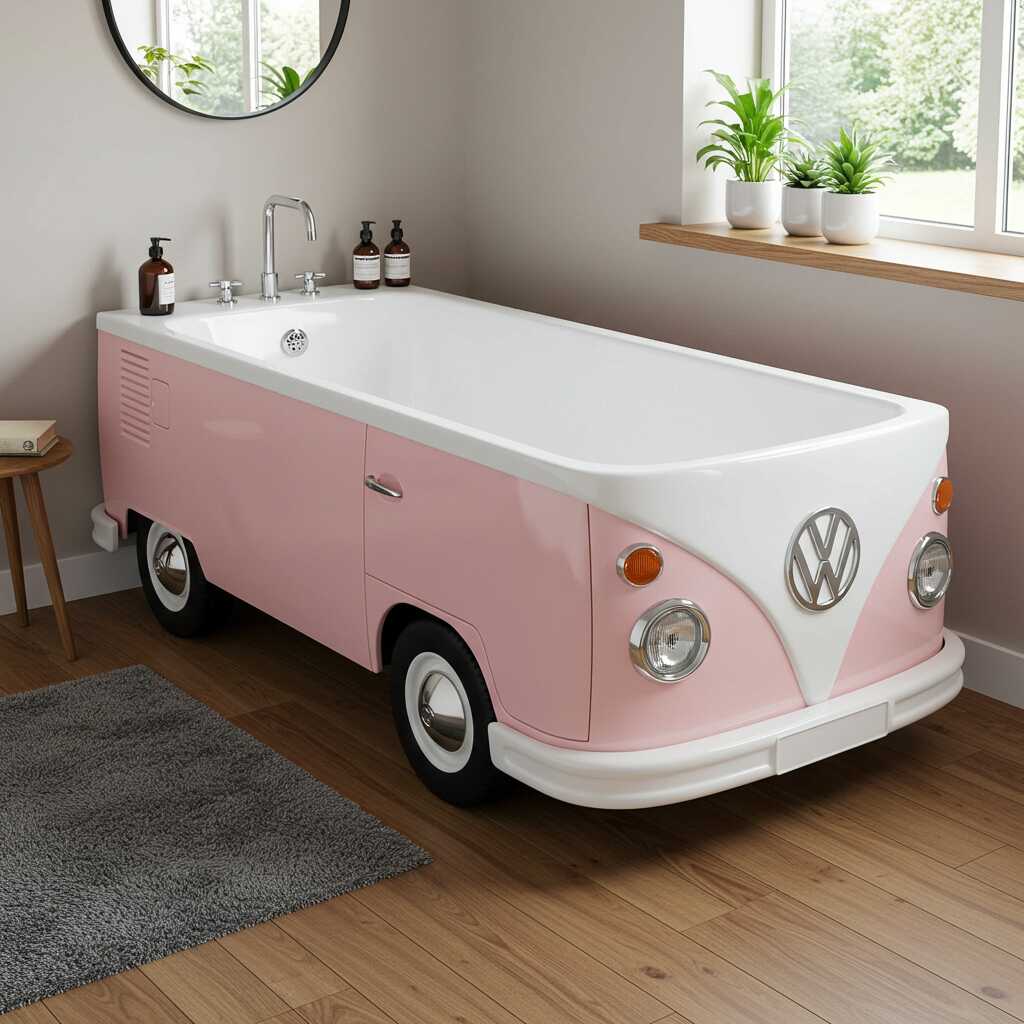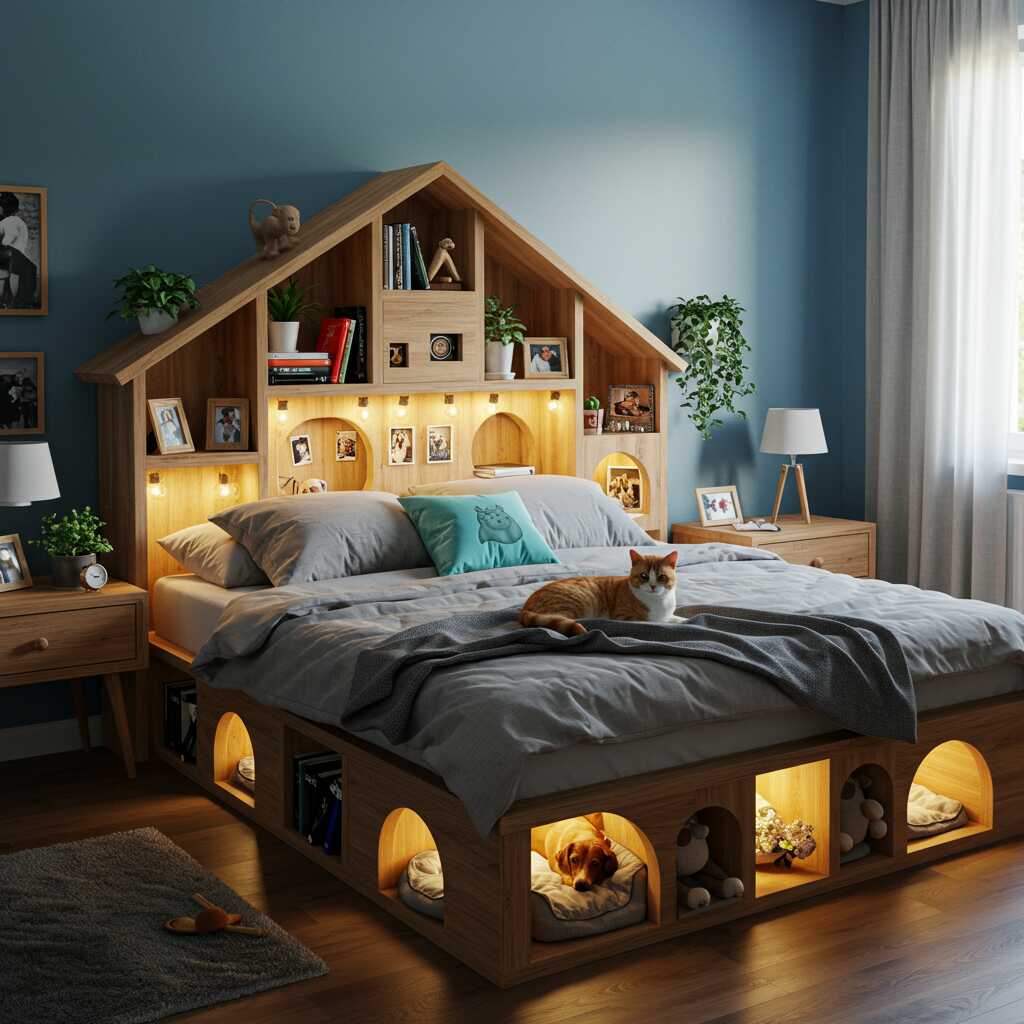In the ever-evolving world of interior design, few spaces have undergone as dramatic a transformation as the bathroom. Once relegated to purely utilitarian purposes, bathrooms are now celebrated as sanctuaries of relaxation and self-care—a personal retreat within the home. As homeowners increasingly prioritize aesthetics and functionality in equal measure, designers have responded with innovative solutions that blend luxury, comfort, and creativity. Among these emerging trends, one stands out for its boldness and ingenuity: the Volkswagen bathtub. This unique design concept has captured imaginations worldwide, redefining what it means to create a truly immersive bathing experience.
The Volkswagen bathtub represents more than just a shift in bathroom fixtures—it symbolizes a broader movement toward personalized, statement-making design. Inspired by the iconic curves and craftsmanship of classic Volkswagen vehicles, these bathtubs combine nostalgia with modern sensibilities. They serve as both functional installations and artistic centerpieces, inviting users to engage with their surroundings on an emotional level. With their distinctive shapes and meticulous attention to detail, Volkswagen bathtubs embody the fusion of industrial heritage and contemporary elegance that defines today’s most sought-after design trends.
As we delve into this exploration of cutting-edge bathroom design, it becomes clear that the Volkswagen bathtub is not merely a fleeting fad but rather a testament to how far creativity can take us when tradition meets innovation. By examining its origins, influence, and integration into modern lifestyles, we uncover why this trend is reshaping our understanding of luxury and comfort in one of the home’s most intimate spaces.
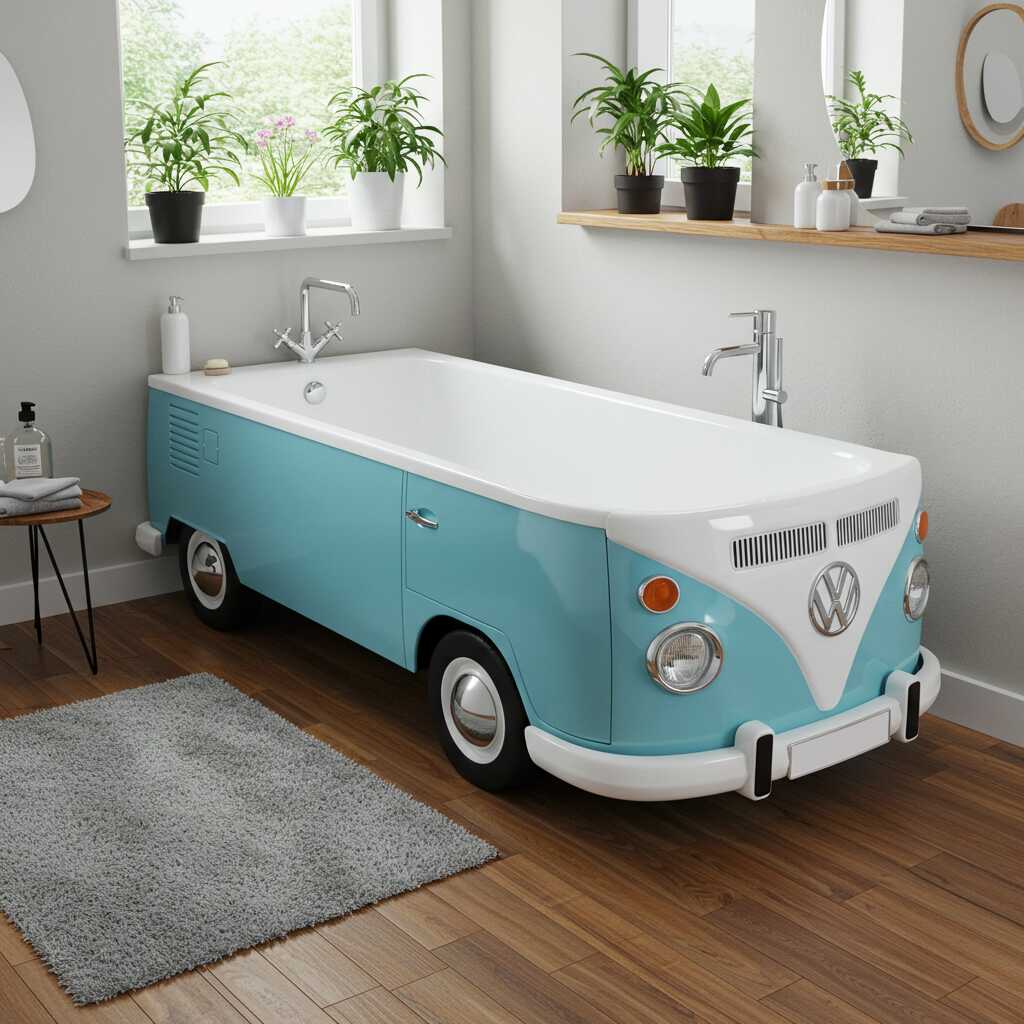
The Evolution of Bathtub Design: From Functionality to Artistry
To fully appreciate the emergence of the Volkswagen bathtub, it is essential to trace the historical trajectory of bathtub design—a journey marked by shifts in societal values, technological advancements, and evolving aesthetic preferences. Early bathtubs were rudimentary vessels primarily designed for practicality, often carved from stone or crafted from wood. These humble beginnings reflected the era’s emphasis on hygiene over indulgence, as bathing was viewed as a necessity rather than an experience. Over time, however, innovations such as indoor plumbing and the advent of porcelain manufacturing transformed bathtubs into sleek, durable fixtures that began to integrate more seamlessly into domestic spaces.
The 20th century ushered in a new wave of experimentation, as designers started to explore unconventional materials like cast iron, fiberglass, and acrylic. This period also saw the rise of iconic silhouettes, including clawfoot tubs and streamlined, minimalist designs that mirrored broader architectural movements such as Art Deco and Modernism. While functionality remained paramount, these developments hinted at a growing desire to elevate the bathing experience beyond mere utility.
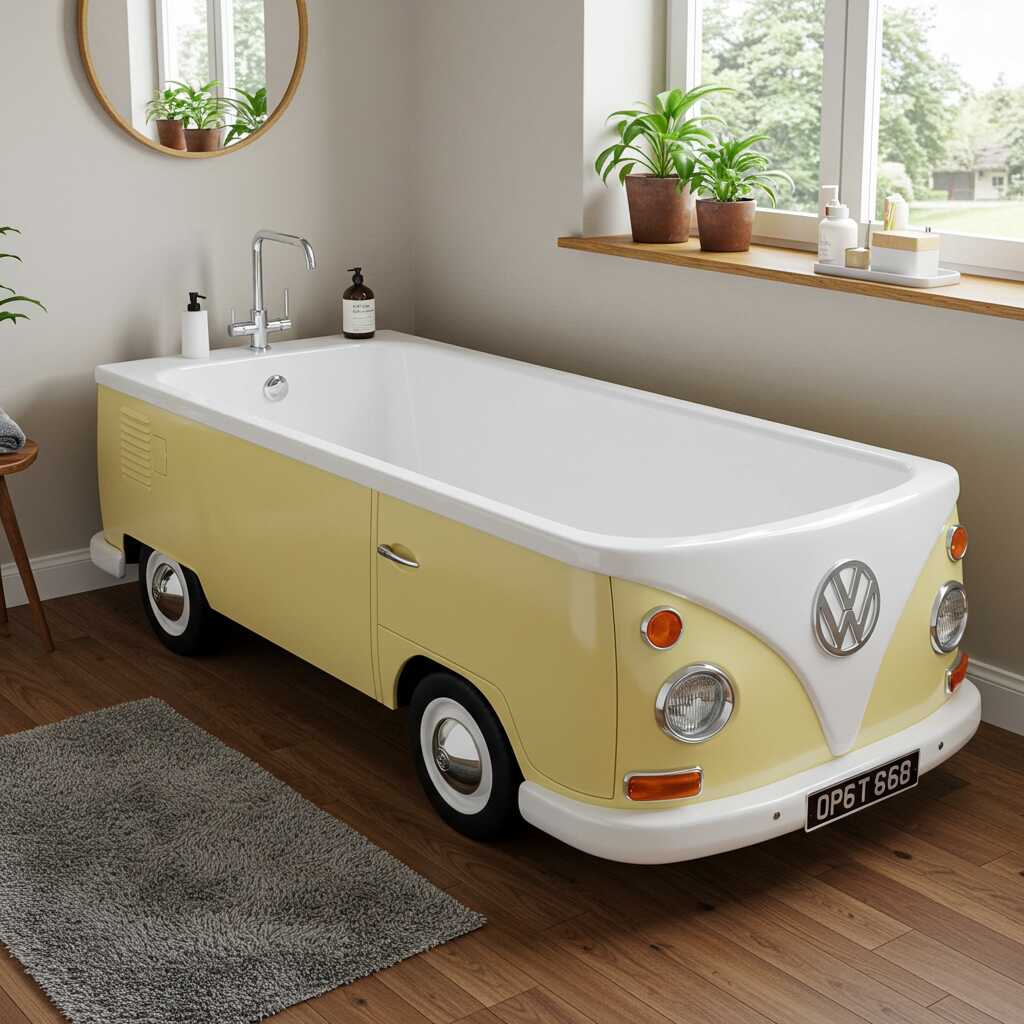
Fast forward to the present day, and bathtubs have become veritable works of art, blending form and function in ways unimaginable to earlier generations. Enter the Volkswagen bathtub—an embodiment of this evolution. Drawing inspiration from the timeless appeal of classic Volkswagen vehicles, these bathtubs reimagine the bathing ritual as a multisensory celebration of design heritage and individuality. Their sculpted curves, reminiscent of the Beetle or Bus models, evoke a sense of nostalgia while simultaneously offering ergonomic comfort. The incorporation of automotive-inspired finishes, such as polished chrome accents or matte textures, further underscores their role as statement pieces that transcend traditional notions of what a bathtub should be.
What sets the Volkswagen bathtub apart from its predecessors is its ability to blur the lines between furniture, sculpture, and functional fixture. It challenges conventional design paradigms by transforming a mundane object into a conversation starter—a piece that tells a story and invites interaction. In doing so, it aligns perfectly with current trends favoring customization and personality-driven interiors. Rather than adhering to uniform standards, these bathtubs celebrate uniqueness, appealing to those who seek to infuse their living spaces with meaning and character. This transition from purely functional designs to expressive, artful creations exemplifies how far bathtub design has come—and why the Volkswagen bathtub stands as a pinnacle of this transformative journey.
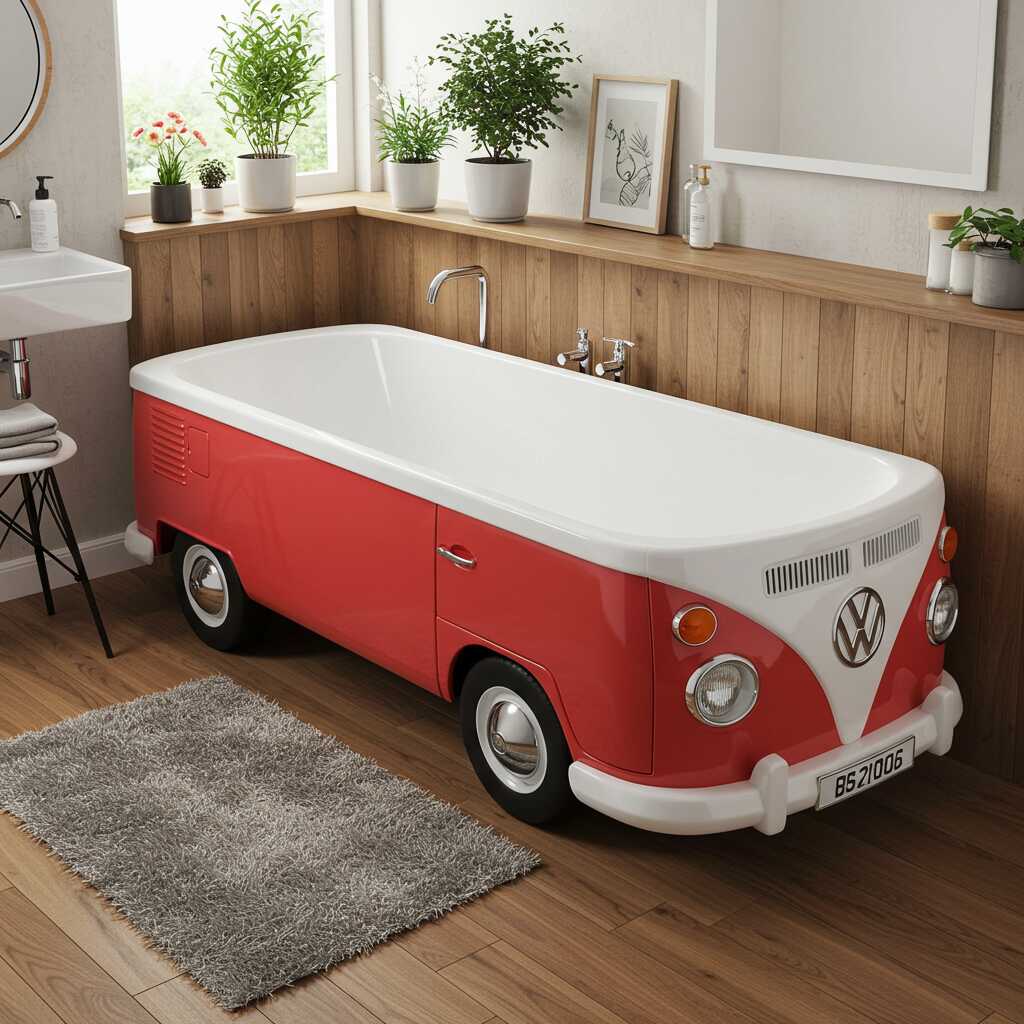
The Allure of Volkswagen Bathtubs: A Blend of Nostalgia and Innovation
The Volkswagen bathtub owes much of its charm to its seamless fusion of nostalgic elements and cutting-edge innovation. At its core, this design marvel pays homage to the enduring legacy of Volkswagen vehicles, which have long been celebrated for their iconic styling, craftsmanship, and cultural significance. Evoking memories of road trips, freedom, and simpler times, the bathtub’s silhouette mirrors the flowing curves and rounded edges that define classic models like the Beetle and Bus. These familiar contours resonate deeply with individuals who grew up admiring these vehicles, creating an emotional connection that transcends mere aesthetics. Yet, this nod to the past is not confined to superficial resemblance; it is elevated by modern engineering techniques that ensure the bathtub is as functional as it is visually striking.
One of the standout features of the Volkswagen bathtub is its meticulous attention to ergonomic design. Unlike traditional tubs, which often prioritize straight lines and rigid forms, this bathtub embraces a contoured shape that cradles the body comfortably. Its sloped backrest and strategically placed armrests are inspired by the seating arrangements found in vintage Volkswagens, ensuring an unparalleled level of relaxation during use. Furthermore, the depth and curvature of the tub are carefully calibrated to provide optimal water retention, allowing users to immerse themselves fully without compromising stability or safety. These thoughtful design elements transform the act of bathing into a luxurious experience akin to lounging in the passenger seat of a beloved classic car.
Beyond its physical attributes, the Volkswagen bathtub serves as a canvas for avant-garde material experimentation. While traditional bathtubs rely heavily on materials like acrylic or enamel-coated steel, this innovative design incorporates advanced composites and finishes that mimic the tactile qualities of automobile exteriors. For instance, some models feature a high-gloss finish that replicates the gleaming sheen of a freshly polished VW hood, while others adopt matte textures reminiscent of retro paint jobs. Additionally, certain iterations incorporate subtle metallic accents—such as chrome trim or brushed aluminum details—that echo the intricate embellishments seen on vintage Volkswagens. These materials not only enhance the visual appeal of the bathtub but also contribute to its durability and ease of maintenance.
Perhaps most compelling is how the Volkswagen bathtub bridges generational divides through its universal appeal. For older generations, it evokes cherished memories of youthful adventures and simpler days spent behind the wheel of a trusty Volkswagen. For younger audiences, it introduces a sense of discovery, presenting an opportunity to connect with a storied automotive heritage in a novel and unexpected way. This interplay between nostalgia and modernity ensures that the bathtub resonates across age groups, making it a versatile addition to any home. Its ability to spark conversations and elicit smiles underscores its role as more than just a functional fixture—it is a conduit for shared experiences and storytelling.
Ultimately, the Volkswagen bathtub’s allure lies in its ability to honor the past while embracing the future. By combining the timeless charm of classic automobiles with state-of-the-art design principles, it creates a bathing experience that is both deeply personal and profoundly innovative. Whether admired for its aesthetic beauty, ergonomic ingenuity, or cultural resonance, this remarkable creation embodies the spirit of reinvention that continues to drive progress in bathroom design.
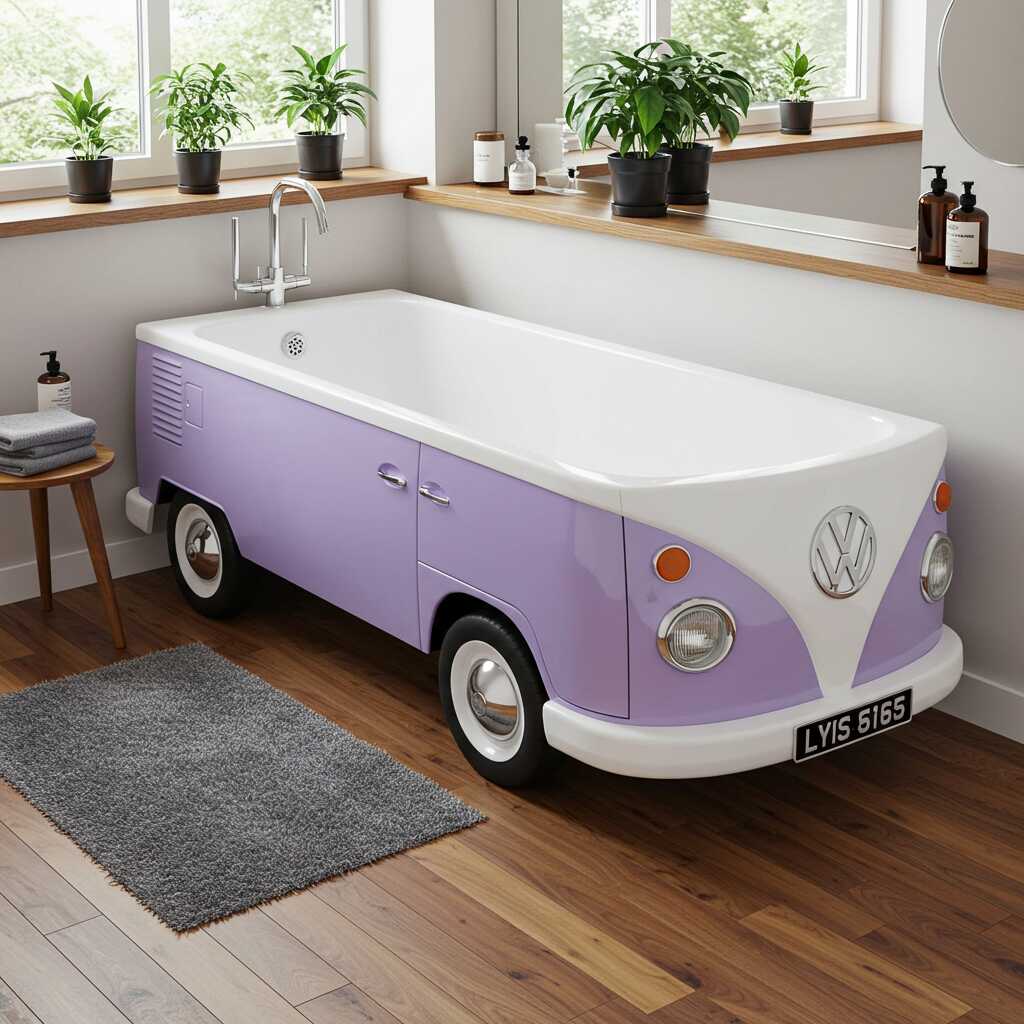
Integrating Volkswagen Bathtubs into Contemporary Bathrooms: A Study in Harmony and Contrast
Incorporating a Volkswagen bathtub into a modern bathroom requires a thoughtful balance of complementary and contrasting elements to ensure the space feels cohesive yet dynamic. The key lies in leveraging the bathtub’s bold presence as a focal point while harmonizing it with the room’s overall aesthetic. One effective approach involves pairing the bathtub with minimalist fixtures and sleek surfaces, such as matte black faucets, frameless glass shower enclosures, or monochromatic tiles. These understated components allow the bathtub’s sculpted curves and nostalgic charm to take center stage, creating a visual dialogue between old-world craftsmanship and contemporary minimalism. For instance, a white Volkswagen bathtub set against a backdrop of charcoal-gray walls and warm wooden accents can evoke a sense of refined contrast, where the tub’s playful design is grounded by the room’s clean lines and neutral tones.
Lighting plays a crucial role in accentuating the bathtub’s unique features and enhancing the ambiance of the space. Strategic placement of recessed ceiling lights or pendant fixtures can highlight the bathtub’s automotive-inspired details, casting soft shadows that emphasize its curves and reflective surfaces. Alternatively, incorporating warm LED strips beneath floating vanities or along the base of the tub itself adds a layer of sophistication, subtly illuminating the area without overwhelming the design. Natural light, too, can transform the space, particularly when paired with large windows or skylights that flood the room with daylight. This interplay of artificial and natural lighting not only elevates the visual impact of the bathtub but also reinforces the bathroom’s role as a sanctuary for relaxation and rejuvenation.
Color schemes and textures further amplify the integration of a Volkswagen bathtub into modern design. Bold color choices, such as deep navy blue or emerald green cabinetry, can create a striking juxtaposition against the tub’s classic lines, infusing the space with energy and personality. Conversely, a muted palette of soft grays, whites, and earthy tones fosters a serene atmosphere, allowing the bathtub to shine as a subtle yet captivating centerpiece. Textural diversity also enhances the sensory experience of the bathroom. Pairing smooth, glossy surfaces—like the bathtub’s polished finish—with rougher materials such as raw concrete or woven textiles introduces tactile interest, preventing the space from feeling overly sterile or monotonous.
Real-world examples illustrate the versatility of Volkswagen bathtubs in diverse settings. In urban lofts, where industrial chic reigns supreme, a matte-finish bathtub complements exposed brick walls and metal accents, bridging the gap between rugged and refined. Meanwhile, in coastal homes, a glossy white tub surrounded by light oak flooring and seafoam-green tiles channels a breezy, retro-inspired vibe. Each installation demonstrates how the bathtub adapts to its environment, serving as both a functional element and a narrative anchor that ties the room together. Whether through bold contrasts or harmonious blends, the Volkswagen bathtub proves itself a transformative addition to any contemporary bathroom, enriching the space with its timeless allure and innovative spirit.
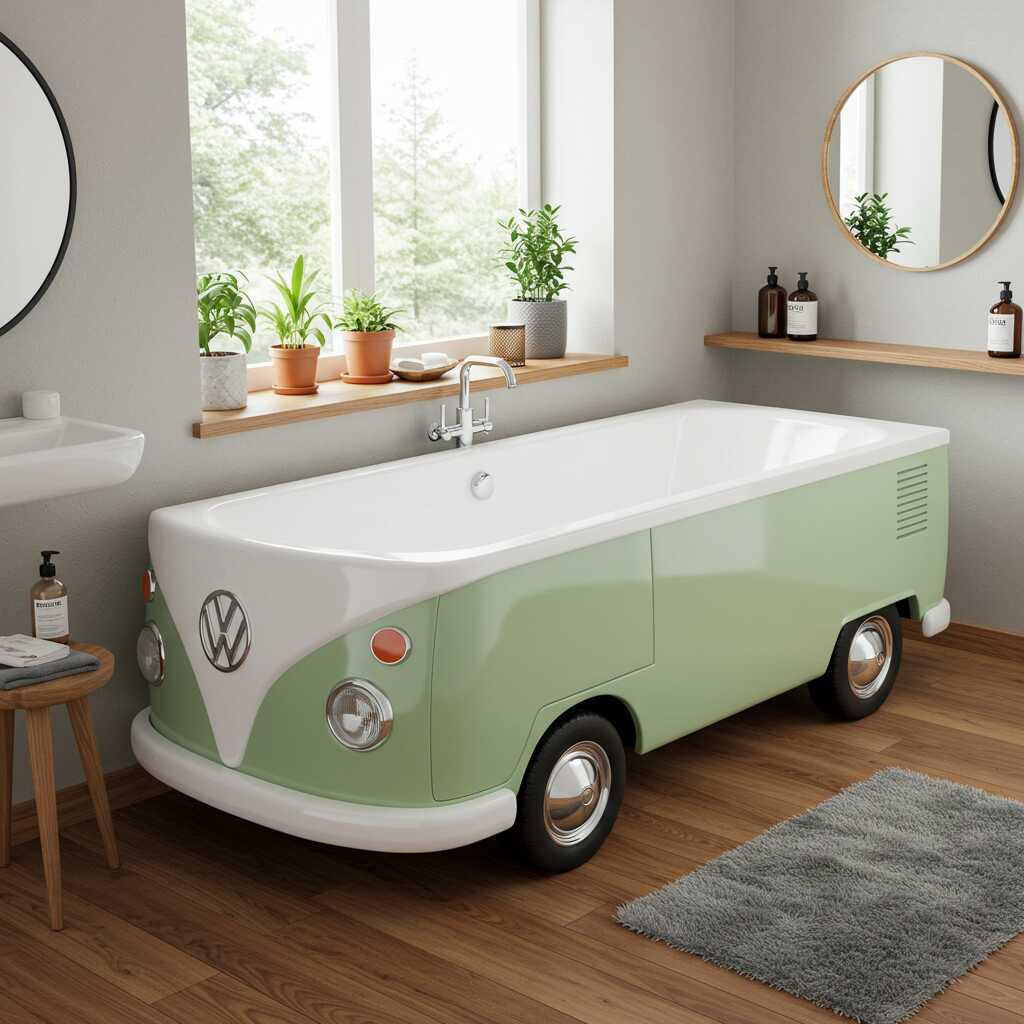
Conclusion: Redefining Luxury and Personalization in Bathroom Design
The rise of the Volkswagen bathtub encapsulates a pivotal moment in bathroom design, where tradition meets innovation to create something truly extraordinary. More than just a fixture, it represents a paradigm shift in how we perceive and interact with our personal spaces. By blending the nostalgic charm of classic Volkswagen vehicles with cutting-edge design principles, this trend challenges conventional notions of luxury and functionality. It invites homeowners to view their bathrooms not merely as utilitarian areas but as extensions of their personalities, where every element tells a story and reflects individual tastes.
Looking ahead, the influence of the Volkswagen bathtub is likely to inspire further experimentation in bathroom design. Its success suggests a growing appetite for bespoke, statement-making pieces that defy expectations and elevate everyday routines into memorable experiences. As designers continue to push boundaries, we may see similar homages to cultural icons or unexpected cross-disciplinary inspirations emerge, each contributing to a richer tapestry of possibilities for modern living spaces. Ultimately, the Volkswagen bathtub serves as a reminder that design is not static—it evolves, adapts, and transforms, much like the spaces we inhabit and the stories we choose to tell within them.
